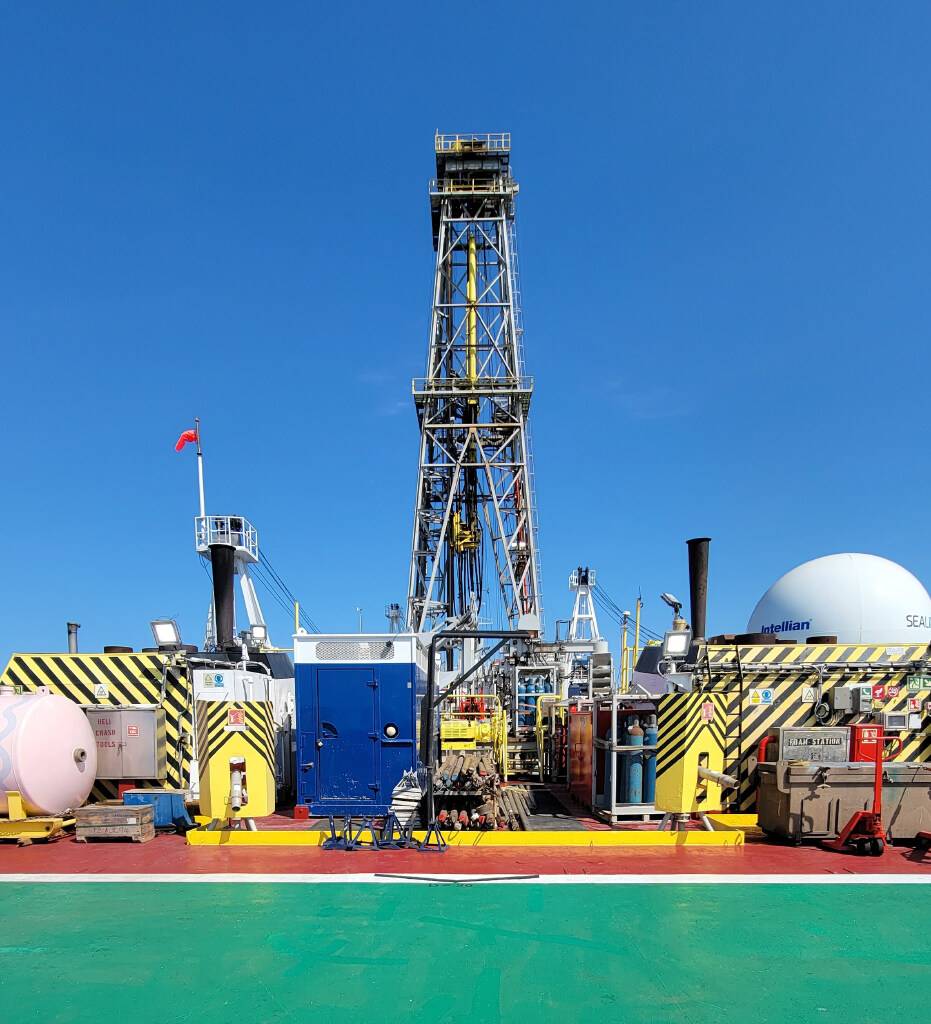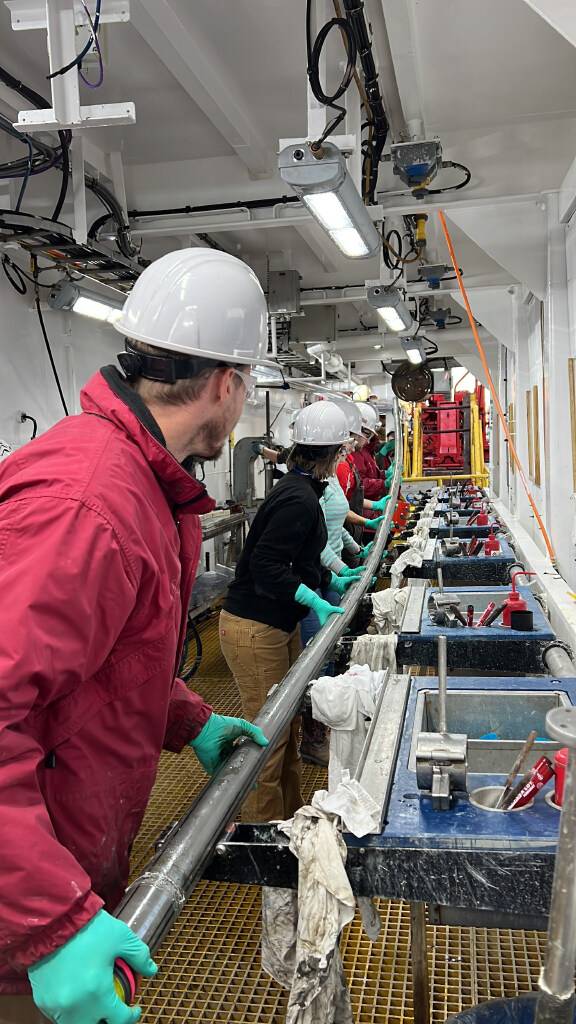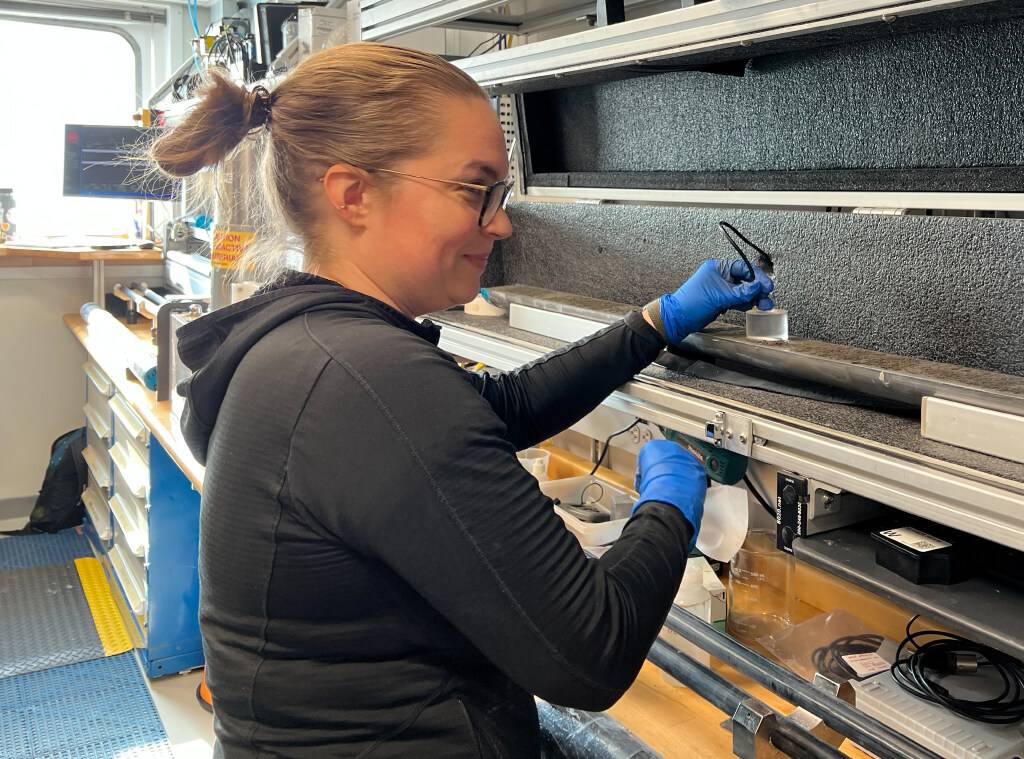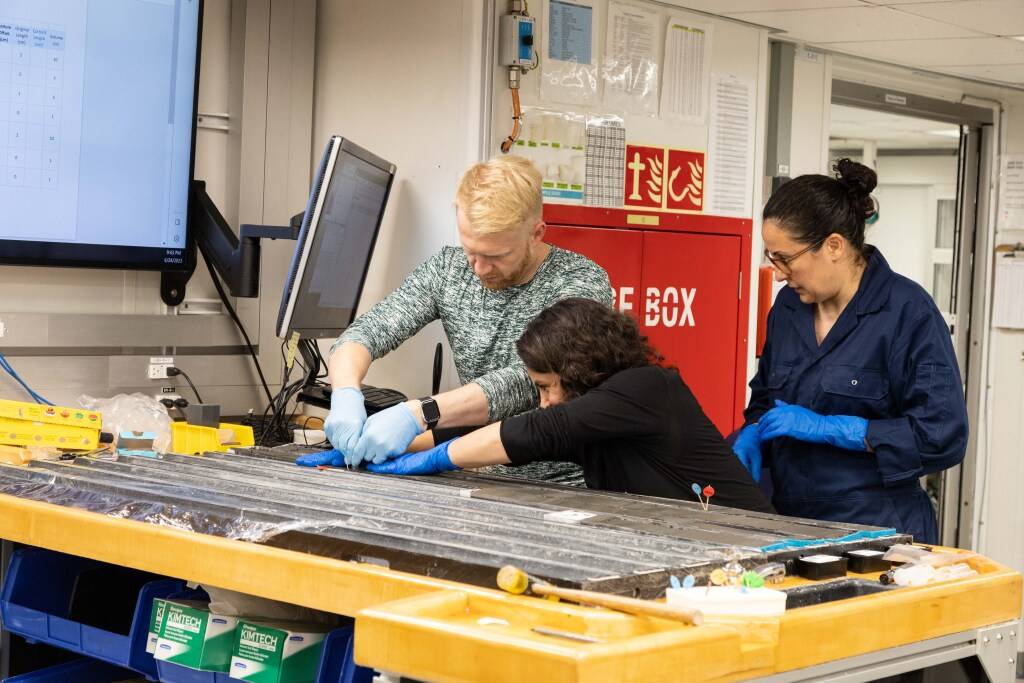Discovery
Deep Drillers
Mega Machines: JOIDES Resolution
When it comes to deep drillers, JOIDES Resolution takes the cake, embarking on Expedition 395 to understand the impacts of mantle plumes on deep ocean currents
By Celia Konowe
The JOIDES Resolution in port in Ponta Delgada.
© Claudio Robustelli Test, IODP JRSOThe world’s oceans, still largely unexplored, remain a treasure trove for scientists and researchers alike. Physical, chemical and biological features of the ocean interact with each other and in turn, influence oceanic, meteorological, atmospheric and even geological events. Drilling below the ocean floor for cores is a critical tool in the race to learn more about the Earth’s history, current environmental dynamics, as well as their relevance for climate change and a rapidly warming future.
A leader in paleoclimatology, the study of understanding the climate and environmental change through Earth’s history, is the JOIDES Resolution or JR for short. The name stands for Joint Oceanographic Institutions for Deep Earth Sampling and pays homage to Captain James Hook’s HMS Resolution. The seagoing research vessel is currently embarked on “Expedition 395: Reykjanes Mantle Convection and Climate,” running from June 12 through August 12. The project has three main goals, the first of which is to determine how the V-Shaped Ridges (VSR) and V-Shaped Troughs (VST) in the area along the Reykjanes Ridge (the area of the Mid-Atlantic Ridge just south of Iceland) were formed. These distinctive ocean crust patterns stretch over hundreds of kilometers on the seabed and are thought to be shaped by the mantle plume under Iceland, which is formed by hot rocks rising from deep within the Earth’s interior. The second objective is to identify how the plume affects the circulation of deep cold water from the Norwegian Sea into the Atlantic Ocean (possibly through plume activity that contributed to changes in the height of oceanic gateways between Greenland, Iceland and Scotland). The third goal would determine how the structure of sediments and bedrock on the ocean floor influences how hydrothermal fluids change chemically over time.
Locations around the region were identified for sampling based on the expedition goals, seismic reflection surveys performed in the area, past expeditions and opportunities to observe and collect unique data. Site U1564, for example, is the most eastern site and located on both a perpendicular ridge and in the Gardar Drift. The drift sites are important, explained Jennifer Field, onboard outreach officer for Expedition 395, because sediments are deposited by cold-water currents from the Norwegian Sea and will indicate if the mantle plume causes an uplift and slowing of the flow. U1564 is also located away from VSRs and VSTs and will thus be used as a control site. Another promising site—and a new addition, at that—is hole U1602, which is located on an ancient VSR under the Eirik Drift, about 200 miles off the east coast of Greenland. The location is not only unexplored but may provide sediments that are millions of years old.




Full Steam Ahead
Expedition 395 builds on previously collected data from 395C, which was originally scheduled for 2020 and whose objectives were partially completed in summer 2021 with only one scientist and a team of marine technicians on board. With its complement restored, Expedition 395 has a full cohort of researchers and marine technicians, allowing for preliminary conclusions to be drawn at sea. Cores revealing the age, composition and history of sediments and basaltic rocks from both expeditions will inform the scientists and aid in forming a more accurate picture of the provenance of the sediments and formation of the bedrock, explained Field. This, in turn, will help each researcher identify what types of samples they need for their individual projects. Co-Chief Scientist Anne Briais of the Centre National de la Recherche Scientifique and the Institut Universitaire Européen de la Mer at the Université de Bretagne Occidentale shared that her research is focused on basalt and the comparison between ridges and troughs. “I’m comparing the morphology of lava flows and correlating them to areas of the ocean floor further from the mantle plume. The three hypotheses of the creation of VSRs and VSTs and the role of the hot spot are crucial to understanding how mid-ocean ridges are working to build ocean crust.”
Drilling Deeper
The JR is well-equipped with the advanced technology necessary to champion its role as a paleoclimate research vessel. Field shared that key features include a 3D x-ray scanner to see inside sediment cores, a scanning electron microscope to examine minerals inside rocks, and a mass spectrometer to measure the composition of fluid trapped in sediment. Most notable is the vessel’s 60-meter derrick, which has the capability to lift more than 6,000 meters of drill string. As such, the JR is unparalleled in its use of a riser-less drilling system as the only globally operating research ship with this deep-water coring ability.
After the onboard coring technology is employed, samples go through preliminary examination to gather initial data. The cores enter a whole-round multi-sensor logger (WRMSL) and special task multi-sensor logger (STMSL), which measure properties like density and magnetic susceptibility, and then are sent into the whole-core x-ray machine. Cores are then split lengthwise, with one half set aside for archive and one for analysis onboard. Samples are taken from the working half to test for physical properties such as moisture, density and magnetism, plus minerals and biological composition are examined under a microscope. Each scientist will conduct further analysis based on individual research needs. The archived half is imaged using a section half imaging logger (SHIL) and a section half multi-sensor logger (SHMSL), which record a photographic image and properties such as reflected light and magnetic susceptibility. The intensity and orientation of magnetism is measure and a description of the core is entered into a database. Archive halves are boxed and stored in a cooler onboard and moved into a repository post-expedition for further research.
Uncharted Territory
By coring through sediments in the drifts, Expedition 395 has the potential to reveal what the oceans were like during periods when the Earth was warmer, and in turn, what to expect in the current era of global warming. The team is also enthusiastic about findings from U1602, the new site on the Eirik Drift, as cores haven’t been taken from that area before. “We are seeing patterns in the cores that indicate much change through geological history and we are hoping to reach sediments that are about 48 million years old,” Field said.
Yet as is the cliché, all good things must come to an end. Expedition 395 marks one of the JR’s last research trips with the International Ocean Discovery Program (IODP), a platform provided by the U.S. National Science Foundation (NSF) that focuses on the history and structure of the planet as recorded in seafloor sediments and rocks. The final year of full JR operations under the current arrangement will be Fiscal Year 2024, noted the NSF in a press release. The vessel is owned by Overseas Drilling Limited (a subsidiary of Siem Offshore AS) and operated by the JR Science Operator (JRSO) at Texas A&M University. The JR began working for the Ocean Drilling Program in 1985 until the IODP (then under the name of Integrated Ocean Drilling Program) began in 2003.
Despite not renewing its agreement with the JR due to rising operational costs, the NSF intends to continue supporting the U.S. scientific ocean drilling community through research investments and plans for future activities. “Scientific ocean drilling has significantly contributed to understanding the broader Earth system and NSF recognizes the importance of these contributions,” the organization stated. “By ending support for the JR now, funds and resources can be directed towards ensuring a sustainable future for the scientific ocean drilling community.”
At the time of writing, the JR was exactly halfway through Expedition 395, with a month left on data collection and countless mysteries of the deep ocean and Earth’s past to uncover. With the groundwork set in 2021, scientists at sea can build on previous research, make informed decisions in the field, and cohesively assemble a detailed history like never before. “We are really excited to be able to continue drilling in sites that were previously drilled in 395C as this has given us a reliable image about both dates and conditions back through the Miocene,” said Field.
The sediment cores from Expedition 395 will provide unprecedented insight into mantle dynamics and how these influence changes in the planet’s interior, oceans and climate. The relationships between Earth’s natural processes is a complex one, as well as a precursor for future climate mitigation and adaptation. With each core the JR collects, one more piece is added to the deep-sea puzzle.



